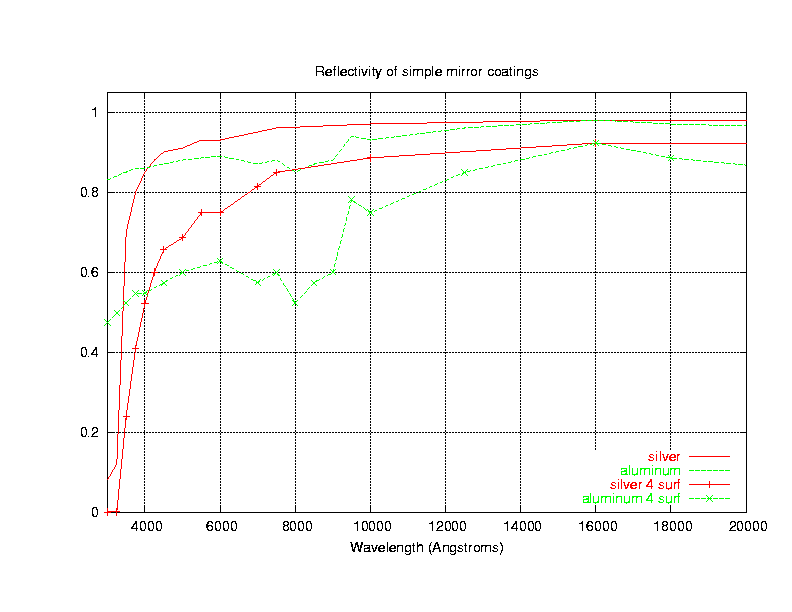
The SNAP project has designed a set of filters which allow one to measure properties of supernovae over a range of redshifts. In this document, I point out how the actual overall passbands differ from that of the filters alone.
The three main factors in determining the overall passband are
There are four mirror surfaces in the SNAP telescope. I considered two coatings:
Below is a graph of the reflectivity as a function of wavelength for one bounce, and for four bounces, for each material.

The SNAP filters are based on a filter like Johnson B, with copies which have wavelengths multipled by 1.16^N, N ranging from 1 to 8. The first 6 filters cover optical CCD detectors, and the final 3 filters cover near-IR detectors.
In the files below, the wavelengths are given in Angstroms, not nanometers.
Each type of detector has its own spectral sensitivity.
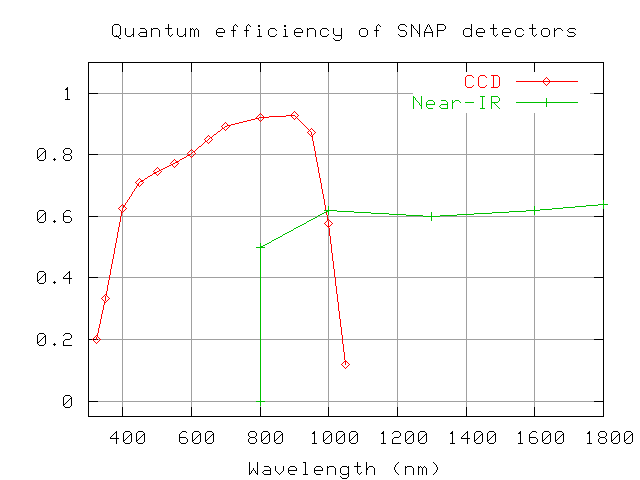
If we combine the effects of mirrors, filters, and detectors, we end up with overall passbands which differ from the nominal filter transmission curves.
Optical filters 0, 2, 4:
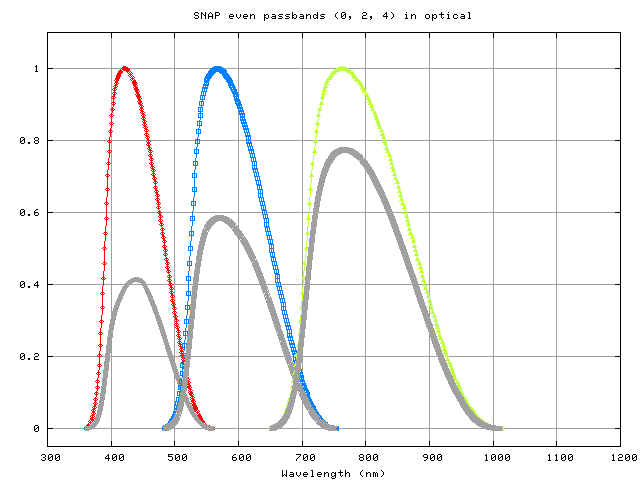
Optical filters 1, 3, 5:
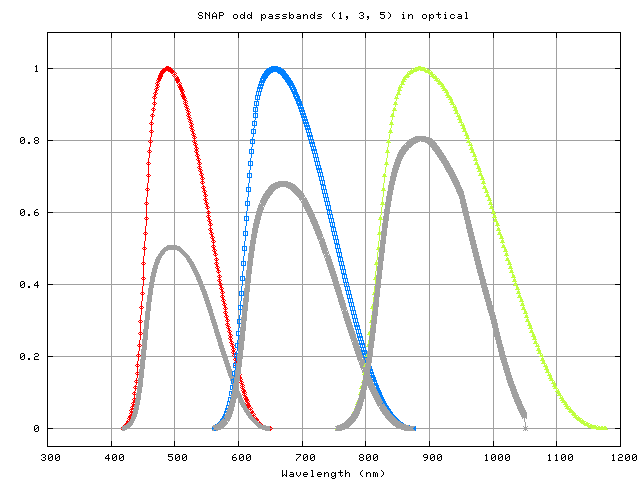
Near-IR filters 6, 7, 8:
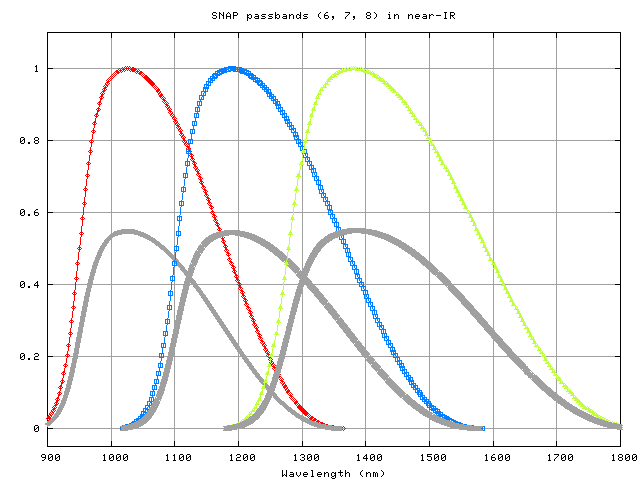
Here are ASCII data files with the actual transmission curves for each passband. There are two columns: wavelength (in nm) and overall transmission (0.0 = no light, 1.0 = perfect transmission).
A summary of the differences:
Difference between filter and passband for SNAP
Filter only Overall Passband shift sensitivity loss
Index z cent. lam (nm) cent. lam (nm) (nm) (mag) percent
-----------------------------------------------------------------------------
0 0.0 441 447 6 0.95 -58%
1 0.16 512 515 3 0.71 -48%
2 0.35 594 597 4 0.55 -40%
3 0.56 689 693 4 0.40 -31%
4 0.81 799 800 1 0.28 -23%
5 1.10 927 905 -22 0.41 -31%
6 1.44 1076 1077 1 0.66 -45%
7 1.83 1248 1248 0 0.66 -45%
8 2.28 1447 1450 3 0.64 -44%
--------------------------------------------------------------------------
updated 5/20/2004